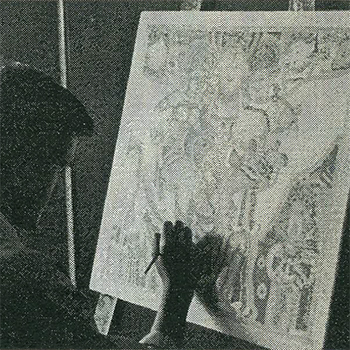In 1971, archaeologists discovered the cave paintings of Bhimbadka, situated 45 km from Bhopal, the capital of Madhya Pradesh, and over 200 rock formations in the area and its surroundings. Figures of men on the hunt, animals, and Tantric symbols formed the premise for these paintings.
According to noted archaeologist Dr. Vishnu Wakenkar, the oldest of these paintings could be as old as 20,000 years, while the most recent ones would be around 500 years old. Similar to other such paintings found elsewhere in the world (Altamira in Spain and Lascaux in France), here too in Bhimbadka, the paintings, rather than merely imitating real life as it existed, sought to explore the truths behind those happenings. However, cave paintings can only be regarded as forerunners of the art of mural painting. True murals are those that conform to the following standard of preparation:
-on a constructed wall, a rough plastered surface is made. This is smoothed over by a second finished surface. Paintings done on this surface are actually murals.
The tradition of embellishing temples and places with mural paintings in the classical style dates back to at least 2,200 years in India. From the wall paintings at Ajanta, which have stood the test of time, we can comprehend the standards that once existed in the ancient towns of Pataliputra, Ujjaini, Vaishali, Varanasi, and Rajgruh. It was between 1 BC and BC that the paintings at cave nos. 9&10 in Ajanta were done. The only Buddhist themes of the paintings that are still intact are those dealing with the worship of Bodhi Vriksha and the Jataka Tales.
